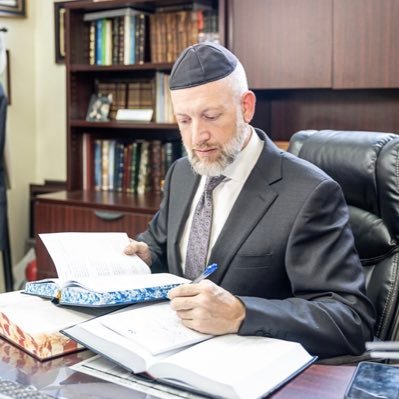Every year, about 11 million children in the United States participate in school-level spelling bees. The most prestigious competition is the annual Scripps National Bee that has been held since 1925. The words have gotten progressively more difficult over the decades as the competition has stiffened. In 1940, the winning word was “therapy,” whereas last year’s was “psammophile.” (It means a plant or animal that prefers or thrives in sandy areas, in case you were not aware.)
Indian Americans comprise about 1% of the U.S. population, yet for the last 20 years, they have dominated the Scripps Spelling Bee. Two weeks ago, a 12-year-old Floridian named Bruhat Soma became the 29th (of 35) Indian American champion since 1999. What can explain this phenomenon? Are they on spelling steroids? Are Indian American’s brains wired to spell better than anyone else?
וְכל־הָעָם֩ רֹאִ֨ים אֶת־הַקּוֹלֹ֜ת וְאֶת־הַלַּפִּידִ֗ם וְאֵת֙ ק֣וֹל הַשֹּׁפָ֔ר וְאֶת־הָהָ֖ר עָשֵׁ֑ן וַיַּ֤רְא הָעָם֙ וַיָּנֻ֔עוּ וַיַּֽעַמְד֖וּ מֵֽרָחֹֽק׃ “All the people witnessed the thunder and lightning, the blare of the horn and the mountain smoking; and when the people saw it, they fell back and stood at a distance.”
Matan Torah remains the most seminal event, not only in Jewish history, but in all of history. The Creator and Master of the Universe shared His blueprint for creation, handed over His manual for meaningful living, opened up His personal diary that is the description of His essence, and the world has never been the same since. Empowered and inspired with the tools of Torah, the Jewish people have transformed the world in so many ways.
That event, that moment, was uniquely momentous; yet, of all the miracles and special moments, the Torah doesn’t mandate that we commemorate it. Hashem took us out of Egypt, and we have Pesach and a mitzvah to tell the story, and to do so over matzah and marror. He took us through the desert, and we have a Yom Tov of Sukkos where we sit in Sukkahs and remember the booths our ancestors sat in, exposed to the elements, under the Divine protection. On Chanukah we light the Chanukah candles, and on Purim we listen to the Megillah. And yet, this greatest moment in our history has no mitzvah, no ritual or ceremony, no commemoration? Yes, the Torah does command us to celebrate a Yom Tov 50 days after the second day of Pesach, but nowhere does it mention that this holiday commemorates the revelation at Har Sinai,
In his Mishnas Rav Aharon, Rav Aharon Kotler explains that the miracles of yetzias mitzrayim were one-time events, parts of history that need to be remembered, recalled and commemorated so that we can come as close as possible to imagining what it looked like because it was so long ago. The same is true for Sukkos, Chanukah, etc. However, the revelation of Har Sinai doesn’t need remembering or commemoration because it is ongoing, it is still happening every day.
All over the world, every time a Jew opens a sefer, attends a shiur, sits down with a chavrusa, plays a Torah podcast, or engages with Torah in any form—the conversation continues, Hashem is still speaking to us. And that is why 40 years after the Torah was given, in Moshe’s soliloquy to the Jewish people, reflecting back on their short history to that point, he describes Matan Torah as קול גדול ולא יסף. Kol gadol means a great sound, but what does “lo yasaf” mean? Says Unkelus, לא פסק, a great voice that hasn’t stopped. He is still speaking, the conversation never ended. Are we listening, are we participating?
When Rav Meir Shapiro zt”l, the founder of the Daf Yomi, was seven years old, he found his mother crying and he asked her why. She explained that she was terribly sad because his melamed was scheduled to come that day but didn’t show up. The young boy didn’t understand why that moved her to tears. She explained, “You don’t understand Meir’l because you are too young, but my son, I want you to always remember, if you miss a day of learning, it cannot be replaced, it cannot be made up.”
Rav Meir Shapiro’s mother understood something so fundamental, so basic and so core to our people – כי הם חיינו ואורך ימינו, Torah is not information, it is not a set of facts, laws, it isn’t part of or commemorating history. Torah learning is not just a way of life, it is what provides life, sustains life and nourishes life. Without it we simply cannot live.
Rav Meir Shapiro’s mother’s tears left an indelible impression and when the opportunity presented itself, he introduced a system and initiative which would ensure we would never miss a day of learning in our lives. It is estimated that today there are more than 300,000 people around the world who learn the Daf Yomi daily. Rav Meir Shapiro and his wife didn’t have biological children, but make no mistake, each blatt of Gemara learned daily by Jews everywhere is his continuity and legacy, each of the devotees of the Daf his progeny.
Our Judaism must not be commemorative, our commitment to Torah must not be a casual connection because of a past. It must be vibrant, dynamic, alive, passionate in the present.
The Midrash tells us that when Hashem gave the Torah, כפה עליהם הר כגגית, He held it over our heads and said accept it or שם תהא קבורתכם, there you will be buried. Many ask, shouldn’t it say פה, here, not שם, there? If Hashem is going to threaten us, shouldn’t He get it right?
I believe, and we are sadly seeing empirically all around us, that if you don’t feel the weight of Torah over your head, the responsibility of a deep, profound and passionate commitment to it personally, you may not spiritually die in that moment. Perhaps you can go a generation or two. But שם, down the line, a few generations in, it will catch up. If we negotiate with our Yiddishkeit, if we pick and choose, if we are casual about it, down the road it will come crashing down on our head.
Do you know why Indian Americans children dominate the Spelling Bee? As explained in one of many articles exploring the phenomenon, it is because Indian American parents value and celebrate spelling well.
וְכל־הָעָם֩ רֹאִ֨ים אֶת־הַקּוֹלֹ֜ת – At Har Sinai we saw the sounds, we didn’t just hear instructions, we saw a vibrant image of a passionate inspired life. Indian American children don’t just hear their parents talk about spelling, they see the value of spelling, they see themselves as spelling champions and then they become that. For them it is more than just a competition, it is a true and genuine mission.
What do our children see? What are we celebrating for our children, for our family, for ourselves? Are we celebrating the things and accomplishments that we truly value? Here is why that question is critical: Because whatever you celebrate, that’s what you’ll value and that is what you children will value and sacrifice for.
Indian Americans celebrate spelling and they have therefore dominated the Spelling Bee. L’havdil, Rav Meir Shapiro’s mother celebrated Torah learning every day and she had a son who introduced the world to the most popular program of daily Torah learning in history. What do you celebrate, what does your family hear you talk about, see you care about, watch you invested in?
Israel’s war against her enemies and the rise of antisemitism have posed formidable challenges but they also bring an opportunity. How we react, what we are doing about it, how focused we are on the fate of our people, can and will leave an indelible and enduring impression on our children and grandchildren.
If we want our families to be passionate, practicing, and proud Jews, living and learning Torah and loving Israel when they are שם, down the road, they need to רֹאִ֨ים אֶת־הַקּוֹלֹ֜ת, not only hear, but see our voices in action now.



















